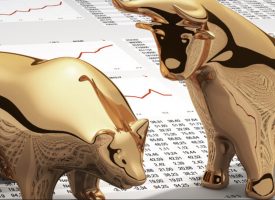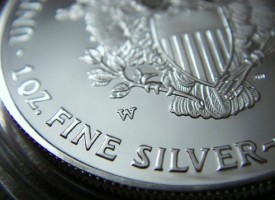There was a delay in publishing due to a technical issue that has now been resolved. Here is the top trend for 2021.
Top Trend For 2021
March 17 (King World News) – Gerald Celente: As we have forecast, the 20th century was the American century – the 21st century will be the Chinese century. The business of China is business; the business of America is war.
While America spent countless trillions waging and losing endless wars and enriching its military-industrial complex, China has spent its trillions advancing the nation’s businesses and building its 21st-century infrastructure.
The following overview of the current economic trends further paints China’s socioeconomic future.
CHINA BEGINS TO WITHDRAW ECONOMIC SUPPORTS
China has become the first major nation to begin to wind down government supports instituted to prop up its economy during 2020’s pandemic and global economic collapse.
As 2020 ended, China’s stimulus spending totaled about 6 percent of GDP, compared to 19 percent in the U.S., according to the International Monetary Fund.
“As the economy resumes growth, we will make proper adjustments in policy but in a moderate way,” Premier Li Keqiang said at an 11 March news conference…
This company just made a gold acquisition that is worth 7-8 times what they paid for it and is now set up for monster upside in 2021! To learn more click here or on the image below.
“Some temporary policies will be phased out, but we will introduce new structural policies like tax and fee cuts to offset the impact,” he added.
The country’s leaders have previously expressed concern about China’s housing bubble and are eager to return to the initiative begun during the Great Recession to reduce the national debt.
Regulators have imposed new rules making it harder for highly-leveraged property developers to get new loans.
In 2020, Chinese debt rose 24 percent to reach 270 percent of GDP, government data shows, with lending picking up in February after slowing for four months.
“It’s very clear that China’s policymakers intend to unwind stimulus and tighten policies,” Ding Shuang, chief China economist at Standard Chartered Bank, said to the Wall Street Journal, “but they’ve been treading carefully without making a sudden U-turn.”
Much depends on China’s approach to reining back its economic supports.
If it moves too quickly, China’s economic recovery could stumble, with worldwide ripple effects. Abrupt actions also could set off a wave of corporate debt defaults and spark a stock market selloff as investors already are worried that share prices may be overinflated.
Despite its cautious approach, there will be some damage, analysts say.
“As China exits supportive measures, some of the problems that got glossed over last year may show up this year,” Wang Tao, UBS’s China economist, told the WSJ. “We expect to see more corporate defaults and a higher bad loan ratio.”
China is beginning to end supports as the U.S. and Europe expand theirs, indicating differing views of the economic crisis, the WSJ noted. China sees the shutdown as a temporary disruption, while western nations view it as a long-term problem needing continuing action…
To hear Sean Boyd discuss $3,000 gold and the big game-changer
for the gold market CLICK HERE OR ON THE IMAGE BELOW.
CHINA ANNOUNCES EXPANDED HIGH-SPEED RAIL NETWORK
By 2025, China’s railway network will have joined all of the country’s cities with 200,000 or more people and high-speed “bullet trains” will connect 98 percent of urban areas with populations of at least 500,000, Lu Dongfu, chair of the China State Railway Group (CSRG), told the People’s Daily newspaper during the current meeting of the National People’s Congress.
Since 2016, China’s rail system has expanded to include 20.9 percent more of the country, nearly doubling the number of high-speed rail routes to 37,900 kilometers or about 23,550 miles.
The country has completed four major east-west lines and four major north-south lines ahead of schedule and is now beginning a project to double the number in both directions, Lu said.
Over the past five years, the rail system counted 14.9 billion passenger trips, 60 percent of which were on bullet trains, the CSRG reported. The numbers showed gains of 41 and 152 percent, respectively, over the loads recorded for 2011 through 2015.
China also is bringing aboard an improved generation of its “Fuxing” high-speed trains, developed by a consortium of government, private businesses, and research universities. The new trains, which travel at speeds above 200 mph, use less energy, are greener, and have more “smart” automated controls, Lu announced.
TRENDPOST
We note this advancement in China as America’s train system sinks into Third World status… not a bullet train to be had and subways systems that rival a night in Calcutta. Also, rather than pumping money to artificially inflate equity markets and the economy as Washington has done in their fight to win the COVID War, Beijing injected stimulus into its infrastructure and small businesses.
To listen to James Turk discuss exactly what price targets to look for if the gold and silver markets have bottomed CLICK HERE OR ON THE IMAGE BELOW.
To listen to Alasdair Macleod discuss the action in the gold, silver and mining share markets and what to expect next CLICK HERE OR ON THE IMAGE BELOW.
© 2021 by King World News®. All Rights Reserved. This material may not be published, broadcast, rewritten, or redistributed. However, linking directly to the articles is permitted and encouraged.











